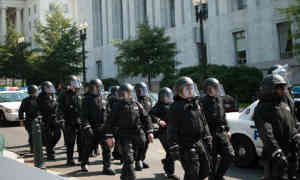
By Alan Reinach
Religious minorities have always been at the forefront of pushing religious freedom in American law. This year is no different, as Samantha Elauf, a young Muslim woman, won a critical case on behalf of all who seek workplace accommodations for their religious beliefs and practices. Ms. Elauf was denied a job at popular retailer Abercrombie & Fitch, not because she was unqualified, but because she wore a head scarf. Although she was never asked why she wore the scarf to her interview, managers assumed it was for religious reasons, and for that reason, didn’t hire her. The United States Equal Employment Opportunity Commission took up Ms. Elauf’s religious discrimination case, all the way to the Supreme Court. The Supreme Court’s 8-1 decision rejected A & F’s argument that its “look” policy is religion neutral, and therefore, not discriminatory. The Court held that employers must treat religious beliefs and practices favorably, and cannot hide behind “religion-neutral” policies.
This decision is a stunning reversal of a decades-long trend treating religious accommodation claims with suspicion. Some fifty years ago, in the wake of the assassination of President John F. Kennedy, President Johnson arm twisted and cajoled Congress into enacting the Civil Rights Act, in honor of Kennedy’s legacy. While the act outlawed employment discrimination on the all the usual bases, religion has always been a poor stepchild.
Almost immediately, the question arose whether the Act’s prohibition of religious discrimination required employers to accommodate the religious beliefs and practices of its employees. Typically, such accommodations involve making exceptions from dress codes for religious expressions such as beards or yarmulkes. Or, even more commonly, employers are asked to permit workers time off to observe the Sabbath, a religious holiday, or to attend church.
When courts were divided on how to answer this question, Congress amended the Civil Rights Act in 1972 to clarify the employers must provide “reasonable accommodation,” but only if it does not result in an “undue hardship.” Still, employers did not know what these vague terms meant in practice. In a 1977 decision in Trans World Airlines v. Hardison, the Supreme Court appeared to view religious accommodation with suspicion, holding that even a minimal amount of hardship was “undue.” The back story on this case is that the court was asked to invalidate religious accommodation altogether as a violation of the First Amendment’s “establishment clause” separating church and state. Although the Court’s decision avoided the establishment clause argument, it greatly weakened the law instead.
The next time religious accommodation went to the Supreme Court was in 1986, when the Supreme Court held, in Ansonia Board of Education v. Philbrook, that employers get to choose among alternative accommodations. Often, employers choose accommodations that disadvantage employees. This decision also weakened the position of workers seeking religious accommodation.
In 1990, when Congress enacted the Americans with Disabilities Act, Congress used the same legal standard for the disabled: reasonable accommodation short of an undue hardship, but defined undue hardship as one causing “significant difficulty or expense.” Advocates for religious freedom began to draft comparable language, and have been asking Congress for nearly twenty years to toughen the religious accommodation law, to no avail.
But 1990 also saw a Supreme Court decision in a religious freedom case, Employment Division v. Smith, which has had an enormous impact on workplace discrimination. In the now infamous “peyote” case, Justice Scalia wrote that religion neutral laws did not raise First Amendment free exercise of religion concerns. Employers have often assumed the same logic applies to their own religion neutral policies – that they need make no exception for religious beliefs and practices. In practice, many Americans have lost their jobs because employers refused to make any exceptions for their religious observances, even when they could do so easily.
Justice Scalia’s opinion for an 8-1 majority in the Elauf case now buries the notion that company policies “trump” religious accommodation requests. The impact on companies will be modest, since such requests are typically quite few in number. But for those Americans of all faiths who can’t just park their religion at home when they go to work, the implications are huge. The issue in Samantha Elauf’s case concerned appearance: wearing of a head scarf. Clearly, the case signals a shift away from conformity to corporate appearance standards. California has gone even further, forbidding employers from segregating workers from the public on account of their religious appearance.
But the decision also implicates many other corporate policies, especially scheduling and discipline. Companies will have to become more flexible in scheduling those who need time to observe the Sabbath or attend church. They will also have to refrain from disciplining workers who would otherwise accumulate attendance points on account of religious observances.
Religious freedom has finally come of age in corporate America.
Alan J. Reinach, Esq., is the Executive Director of the Church State Council, the oldest public policy organization in the west devoted exclusively to issues of religious discrimination and the separation of church and state.

















